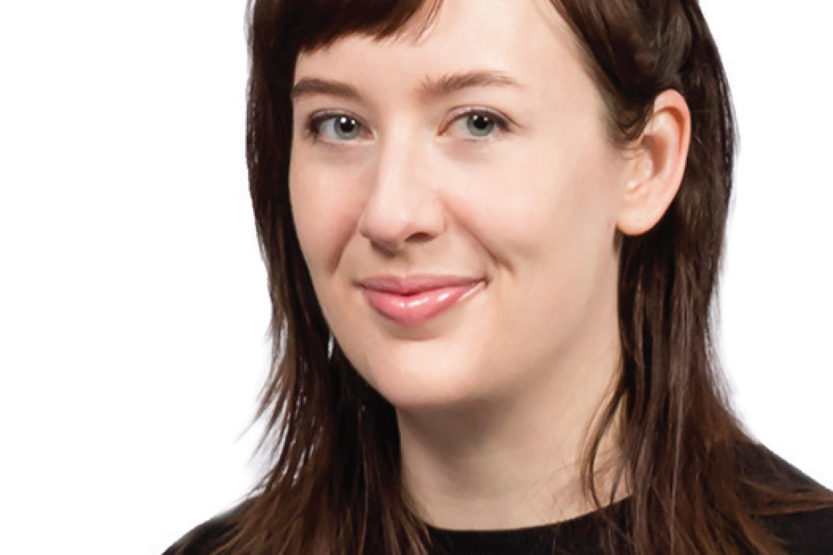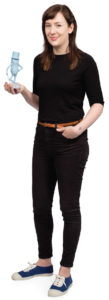In Class: Ad Analyzer
 Associate Professor of Advertising Brittany Duff. (Image by L. Brian Stauffer)
Associate Professor of Advertising Brittany Duff. (Image by L. Brian Stauffer) I teach Consumer Insights, a course for undergraduate advertising majors. The course draws on my own professional background as well as my research. I see students learn to think about how other people think. I love that. I can be cynical about advertising. But when I see my students at the beginning of their careers getting excited about things, it reenergizes me.
At the beginning of the semester, I ask the students to do trend predictions. They have to post their predictions online. Some of them predict micro-trends—fads. A style of skirt. Haircuts. Some of the students will predict specific haircuts, e.g. man buns. It’s interesting to see what they choose and why. At the end of the semester, they have to make a case for their trend and whether it gained momentum.
For the group project, I give them different challenges to choose from. They may look at products that were once leaders in their category but are no longer. One example I used was Clark Bars. A lot of the students had never heard of Clark Bars before. And then they found out, “Omigosh! It was one of the most popular candy bars decades ago!” I asked them, “What happened? Is there a way you could revive the Clark Bar? Do you want to? Would that alienate the people who still eat Clark Bars? What could you do with the brand?”
Consumers encounter thousands of brand communications every day. Most people really aren’t aware of all that many. I ask students how many brands or ads they can remember seeing the day before. The most any student was able to recall was six. That’s a pretty low number. So I became interested in what happens with messages that we ignore.
I did some research on devaluation, which (as I view it) is when you ignore things that are in the way of your goals. You don’t even realize you’re ignoring them. Like when people look at a website for an article, but there are some [sidebar] ads. One school of thought says, “Every exposure is good exposure because it makes you more familiar with the product or service.” But if a person is seeking something, and this ad is trying to grab his or her attention, the ad is going to inhibit their attention. That has negative ramifications.
I worked for an advertising agency when I was in college and after college for a few years. For awhile, I named paint colors for a very large company that creates the paint chips you get at Home Depot or Lowe’s. It really made me think about the power of a name in how you make choices. If I had a bright red, I could name it “Hot Tomato” or “Lipstick Red.” If you want to paint your kitchen, one of those two names is probably more appealing than the other, and makes the color seem more appropriate. I became interested in how the name of something can change your perception of it.
Nobody wakes up and says, “I hope I see a lot of advertising today.” You know? I tell my students, “You have to go into advertising thinking, ‘What are the things that people I’m trying to reach might want to see? What would be useful for them? What would help them?’”
Edited and condensed from an interview conducted on Aug. 25, 2017.


